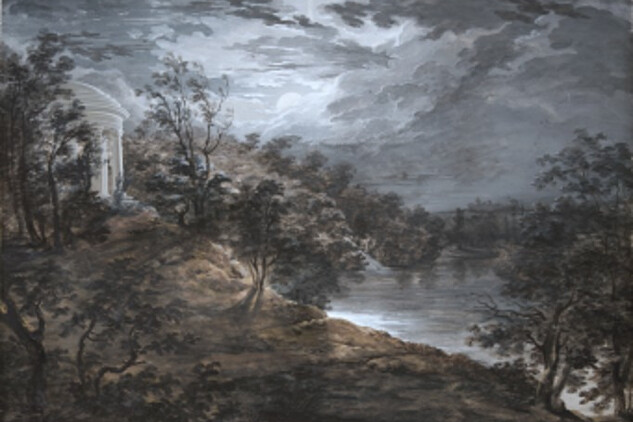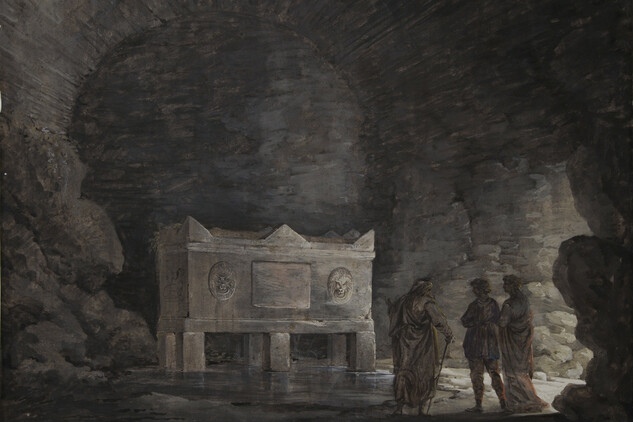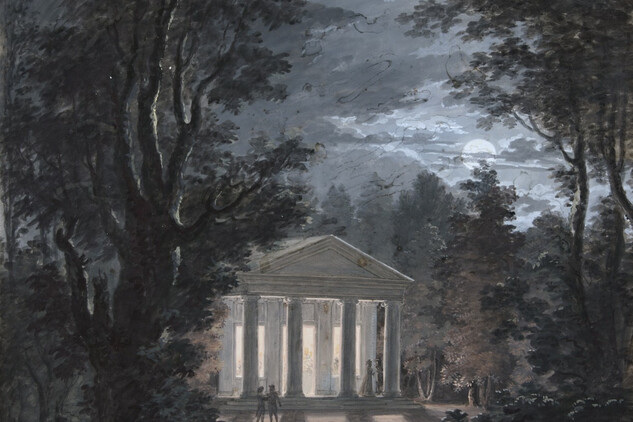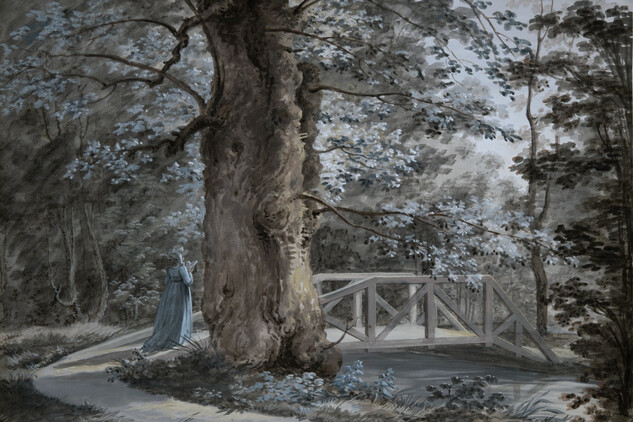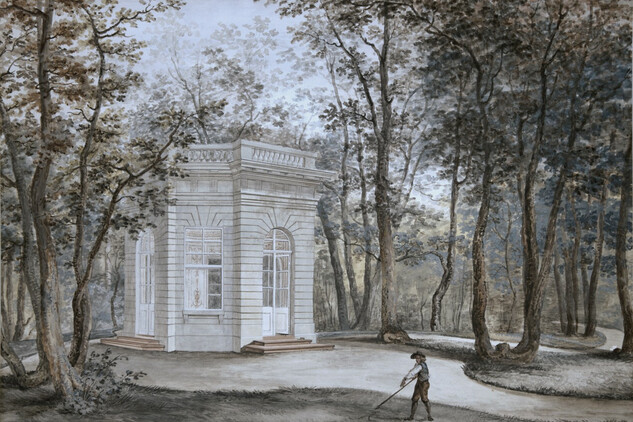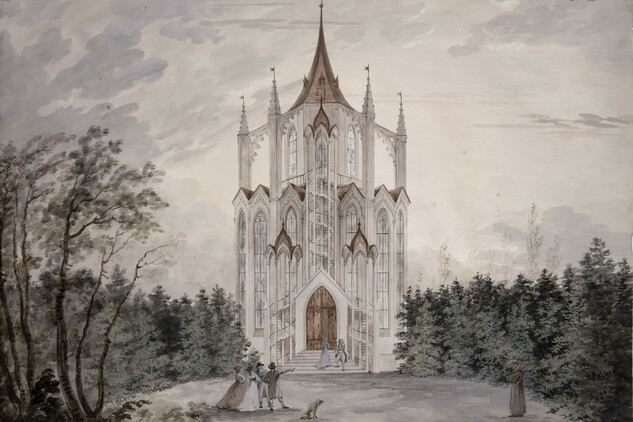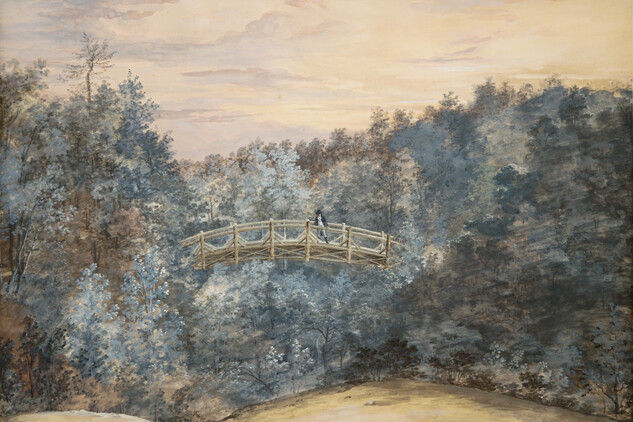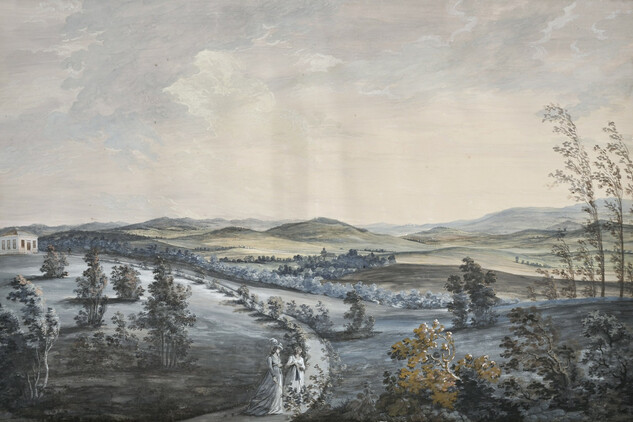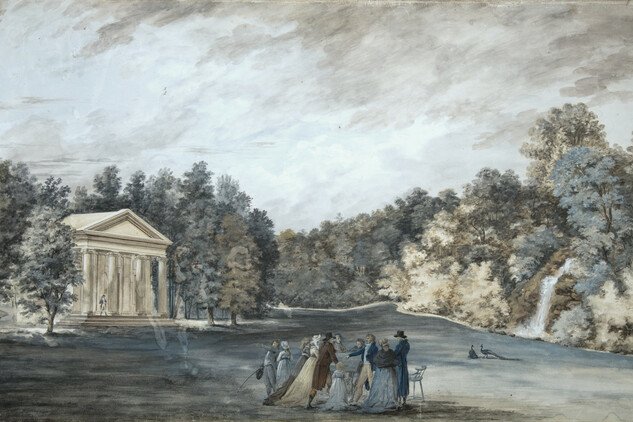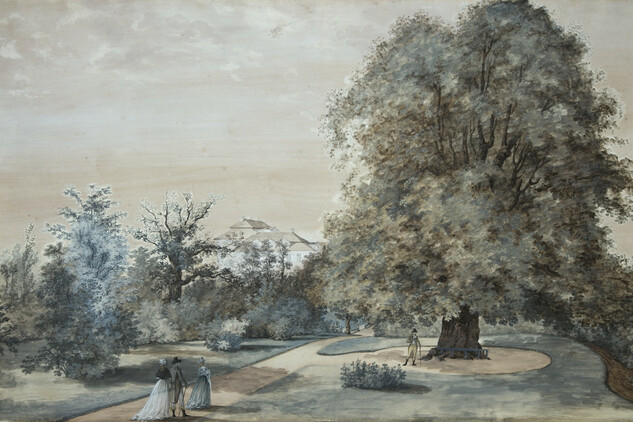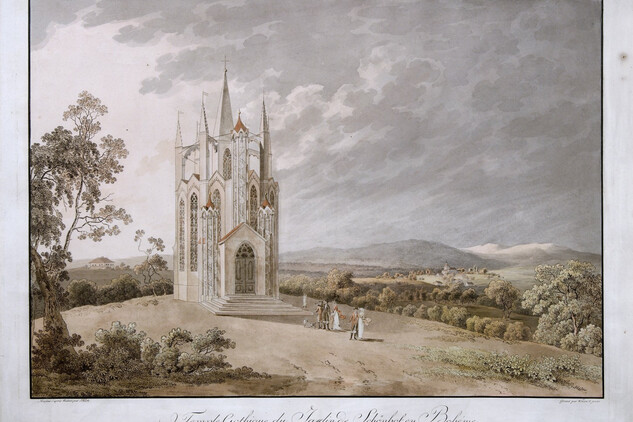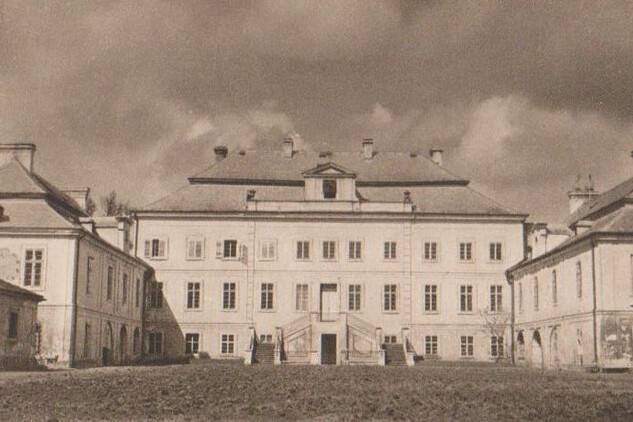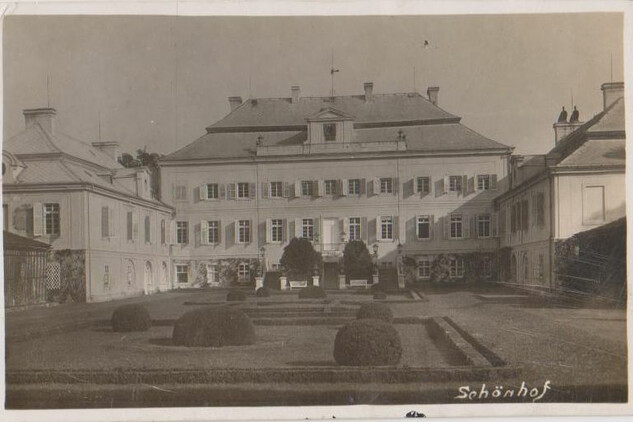History
The first record of Krásný Dvůr dates back to 1295, which mentions Vilém of Krásný Dvůr.
Originally a medieval fortress was rebuilt in the middle of the 16th century in the form of a Renaissance villa. It stood in a square garden surrounded by towers or pavilions in the corners.

In 1649 Heřman Czernin of Chudenice bought the estate. Krásný Dvůr remained in the ownership of the Czernin family until the Second World War.
1720–4 the building was rebuilt and expanded, by the Czernin architect František Maximilian Kaňka, into a Baroque hunting lodge for František Josef Czernin. An axial triple-wing layout developed, with the original villa, rebuilt in Baroque style, dominating, and expanded with somewhat lower side wings (to which the lower service wing was connected) that demarcated the deep cour d’honneur, which was enclosed by a gateway and railings.
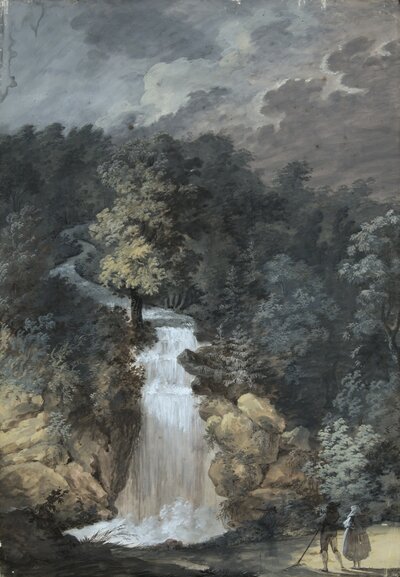
From 1727–32 a French formal garden was established around the house on artificially shifted terrain, under the direction of Matěj Ivan Ledsebe and Jakub Halířek.
A fig house was built in the garden in 1735, as well as a hidden riding school; three allées were seeded by 1736, radiating out from the house to the surrounding countryside (to Buškovice, the pheasantry, and to the avenue to Podbořany); they have survived till now.
In 1748 minor alterations to the interior were made (Stephan Dieudonné). In 1783–4 the chapel was extended, and in 1788 the courtyard arcades were filled in. In 1791 the courtyard staircase was added and in 1792 also the northern exterior staircase.
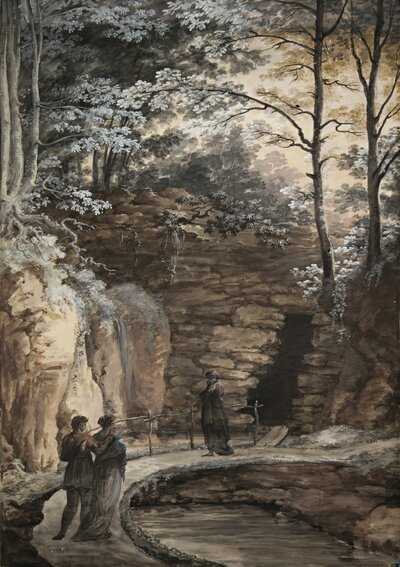
Valuable collections of paintings (portraits, landscapes and still lives by Czech and European masters) were gradually gathered in the interior, including a collection of Holíč faience (from nowadays Slovakia). A set of Baroque life-size portraits of hunting dogs by painter Petr Václav Berger, installed in a corridor, is a noted feature.
A large landscape park covers the area of almost 100 hectares. It is one of the first landscape parks in Bohemia, was established by Jan Rudolf Czernin in 1783–93, replacing the gardens and game reserve (gardener Rudolf Födisch and head forester Jan Wachtl).
Reservoir and fountains were put in the park and important structures or follies were erected there: water tank and cascades (after 1785); the Louis XVI-style Lusthaus (1784–6); the Neo-Classical Pan's Temple (1783–6); the Gloriette (1784) and Obelisk (1801, a copy of the obelisk in the Piazza del Popolo in Rome, erected in memory of the victory of Archduke Karl over the French in 1796) along the axis of a mile-long allée, as well as the Chinese pavilion (1785–6); Neo-Gothic temple (1793–6, erected originally as a look-out tower, later a memorial to the victory of the Allies under the leadership of Karl Filip Schwarzenberg over Napoleon in the Battle of Leipzig in 1813) with a statue of Karl Schwarzenberg by Josef Max; the Dutch farmhouse.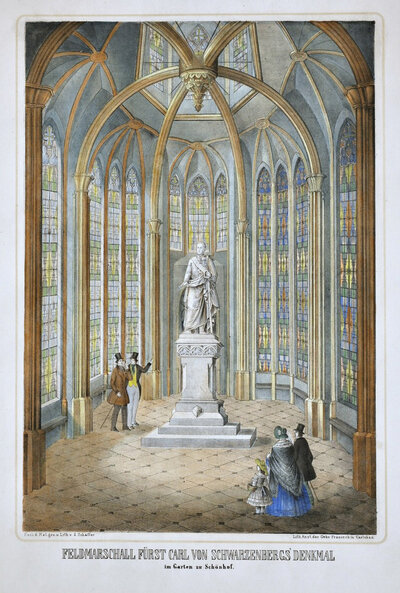
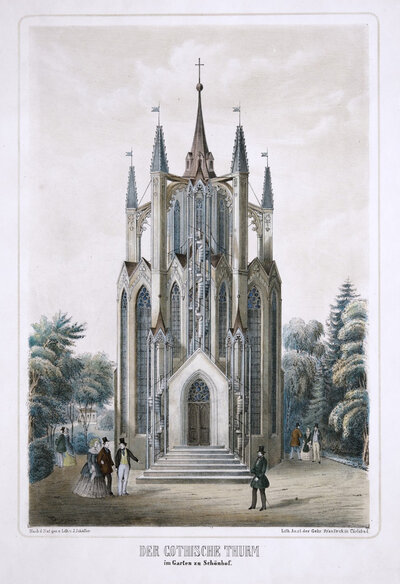
The ‘Rachel’ valley, now called the Hermit’s Ravine, was also modified romantically with the addition of a grotto with sarcophagus, hermitage (now in ruins) with an underground passage to a half-timbered church, now lost, as is the Devil’s Bridge, which once spanned the valley. These were designed by Andreas Niederhofer.
